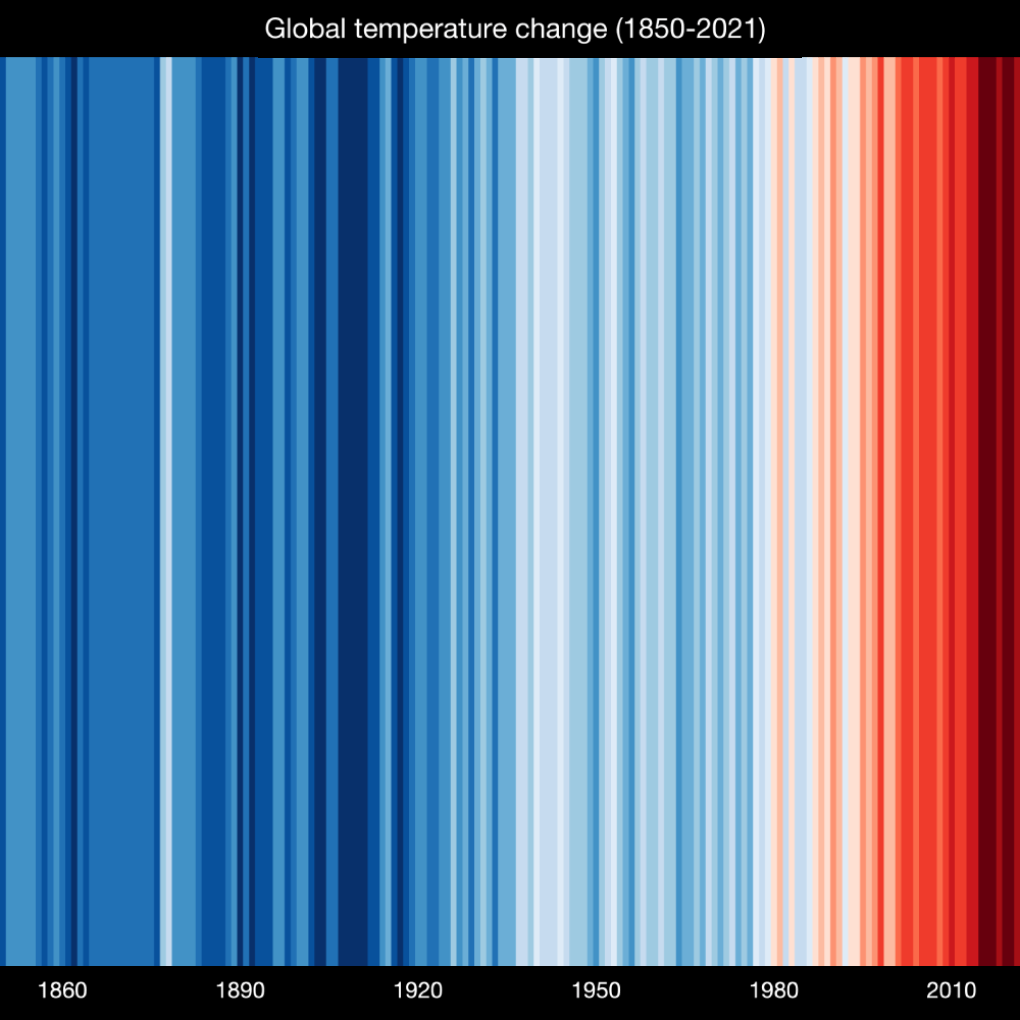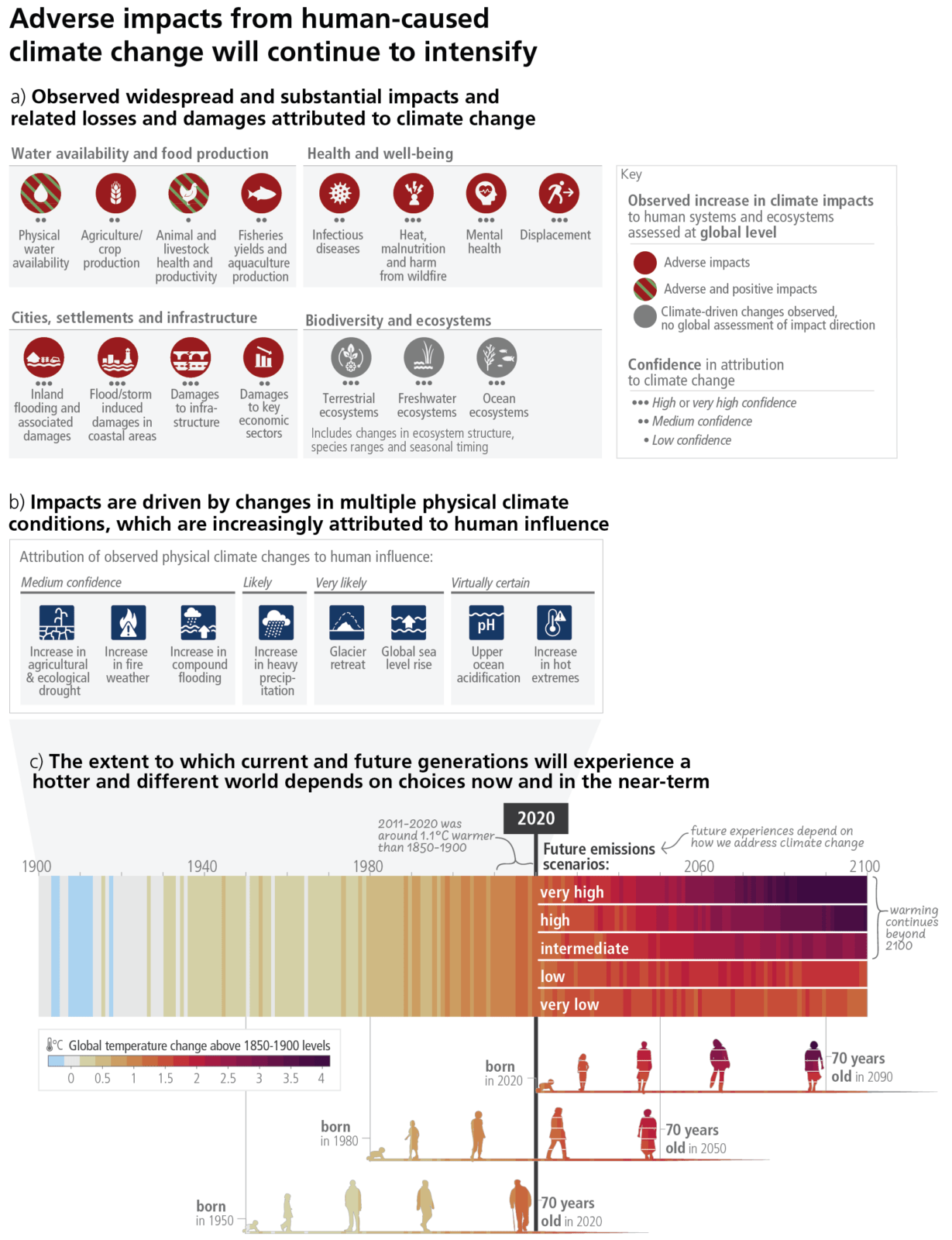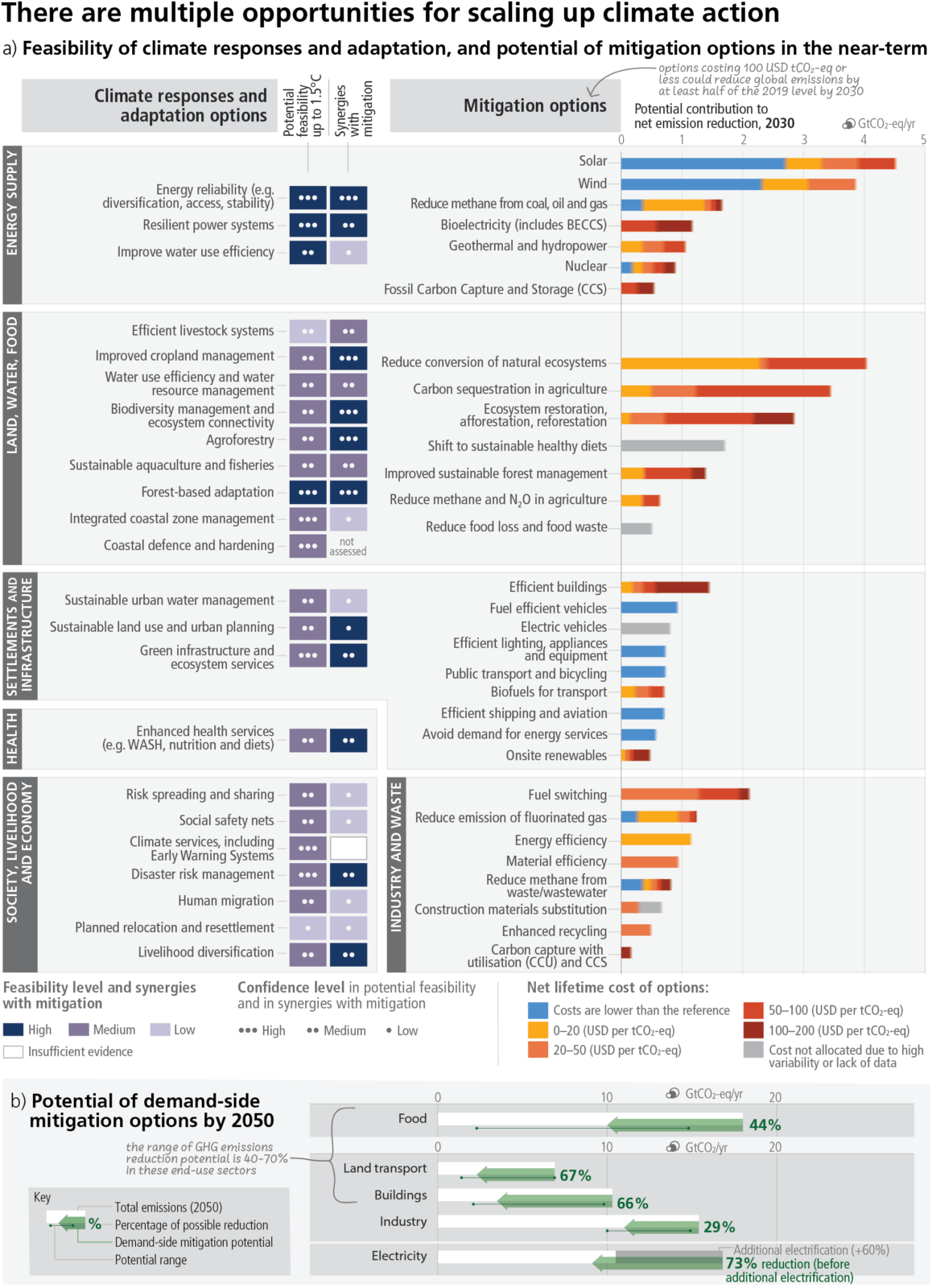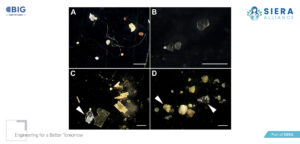The Intergovernmental Panel on Climate Change (IPCC) is a United Nations institution with currently 195 member countries. Since its founding in 1988, it has published detailed reports on the state of climate change and additional special reports every six years on average. The core team of almost 280 authors from 65 countries evaluated more than 18,000 studies for the current sixth assessment report on the topic. The results were presented in three parts ("The Scientific Basis of Climate Change", "Consequences of Climate Change, Adaptation and Vulnerability" and "Mitigation of Climate Change") over a period of several months from 2021 to 2022. The special reports "1.5°C Global Warming", "Ocean and Cryosphere" and "Climate Change and Land Systems" were also consulted for the synthesis report.
The synthesis report sets its own accents: Climate change has not only accelerated, but the speed is likely to increase in the future. The probability of exceeding 1.5°C global warming in the long term has already increased compared to the 1.5°C Special Report of 2018.
To enable a liveable future for all people in this world and to limit global warming to 1.5°C, immediate and drastic reductions in greenhouse gas emissions must be made. Globally, greenhouse gas emissions must peak as early as next year and be almost halved by 2030 compared to current levels, in just seven years. CO2 emissions must even fall to net zero by 2050.
Source: IPCC AR6 Synthesis Report 2023 Extract Figure 1
The 10 % of households with the highest global per capita emissions account for 34-45 % of global greenhouse gas emissions, while the bottom 50 % contribute only 13-15 % to total emissions.
Demand-side measures (especially in buildings, transport and food) can reduce total GHG emissions by 40-70 % by 2050.
All available climate protection measures must be implemented as quickly as possible, because even every further slight increase in the global mean temperature also increases the probability of occurrence of a multitude of risks for humans and the environment. Every tonne of greenhouse gas emissions counts.
CO2 Compared to other measures, removing carbon dioxide from the atmosphere after the fact involves much higher costs and a number of risks, and is no substitute for immediate, far-reaching and sustainable emission reductions. If warming exceeds 1.5 °C, there is a risk of irreversible damage as well as feedback effects triggered by climate change, which in turn amplify it (e.g. large-scale forest fires, death of the Amazon rainforest, thawing of permafrost soils, with an immense release of methane).
If climate action is less ambitious, climate risks will increase more, with extreme events (heat waves, droughts and heavy precipitation, both globally and regionally). The effectiveness of adaptation measures is reduced at higher levels of warming. Climate risks and adaptation measures need to take place with other societal developments, e.g. changing land use, economic development, lifestyles and consumption patterns.
Ecosystem-based adaptation is very important, such as peatland protection or river restoration. These measures ideally combine climate adaptation and climate protection: they act as carbon sinks and make ecosystems resilient to climate change.
In some regions and sectors, limits to adaptation may also be reached for ecosystems and societies, especially in the case of severe climate change. Therefore, immediate action is crucial.
The decisions and actions taken now will have an impact for thousands of years. Reducing greenhouse gas emissions with current efforts would result in a 3.2°C warmer world in the next 70 years, with catastrophic consequences for humans and the environment, and is not nearly enough. It is now up to all, especially the wealthy parts of the world, to embark on a development path that is consistently oriented towards climate protection, with all its challenges but also opportunities for a more just world. If global greenhouse gas emissions are not reduced immediately, rapidly and on a large scale, it will no longer be possible to limit global warming to 1.5 °C or even 2 °C and thus secure a liveable and sustainable future for all.
To meet the 1.5° or 2° target, comprehensive greenhouse gas reduction measures must be taken quickly.
Source: IPCC AR6 Synthesis Report 2023
Potentials for global climate protection measures and technologies as well as climate change adaptation options
Source: IPCC AR6 Synthesis Report 2023










